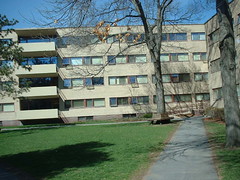czsz
Senior Member
- Joined
- Jan 12, 2007
- Messages
- 6,043
- Reaction score
- 7
Yes, architectural mediocrity pointing the way to aesthetic transience is the clear way forward for most institutions.
Sure, that argument may hold for the Gropius complex (although arguably Harvard still gains through its maintenance by becoming a minor pilgrimage site for Bauhaus fans). But if it had been applied for other buildings at Harvard, like Richardson's Austin Hall, Harvard might have lost out. I'm sure Columbia doesn't consider its hands tied by its McKim, Mead and White campus either, in retrospect.
Starchitecture may always be hit-or-miss, or at least impractical in the future. It doesn't mean we should quit risking it, when future beloved landmarks are also a possibility.
Sure, that argument may hold for the Gropius complex (although arguably Harvard still gains through its maintenance by becoming a minor pilgrimage site for Bauhaus fans). But if it had been applied for other buildings at Harvard, like Richardson's Austin Hall, Harvard might have lost out. I'm sure Columbia doesn't consider its hands tied by its McKim, Mead and White campus either, in retrospect.
Starchitecture may always be hit-or-miss, or at least impractical in the future. It doesn't mean we should quit risking it, when future beloved landmarks are also a possibility.



